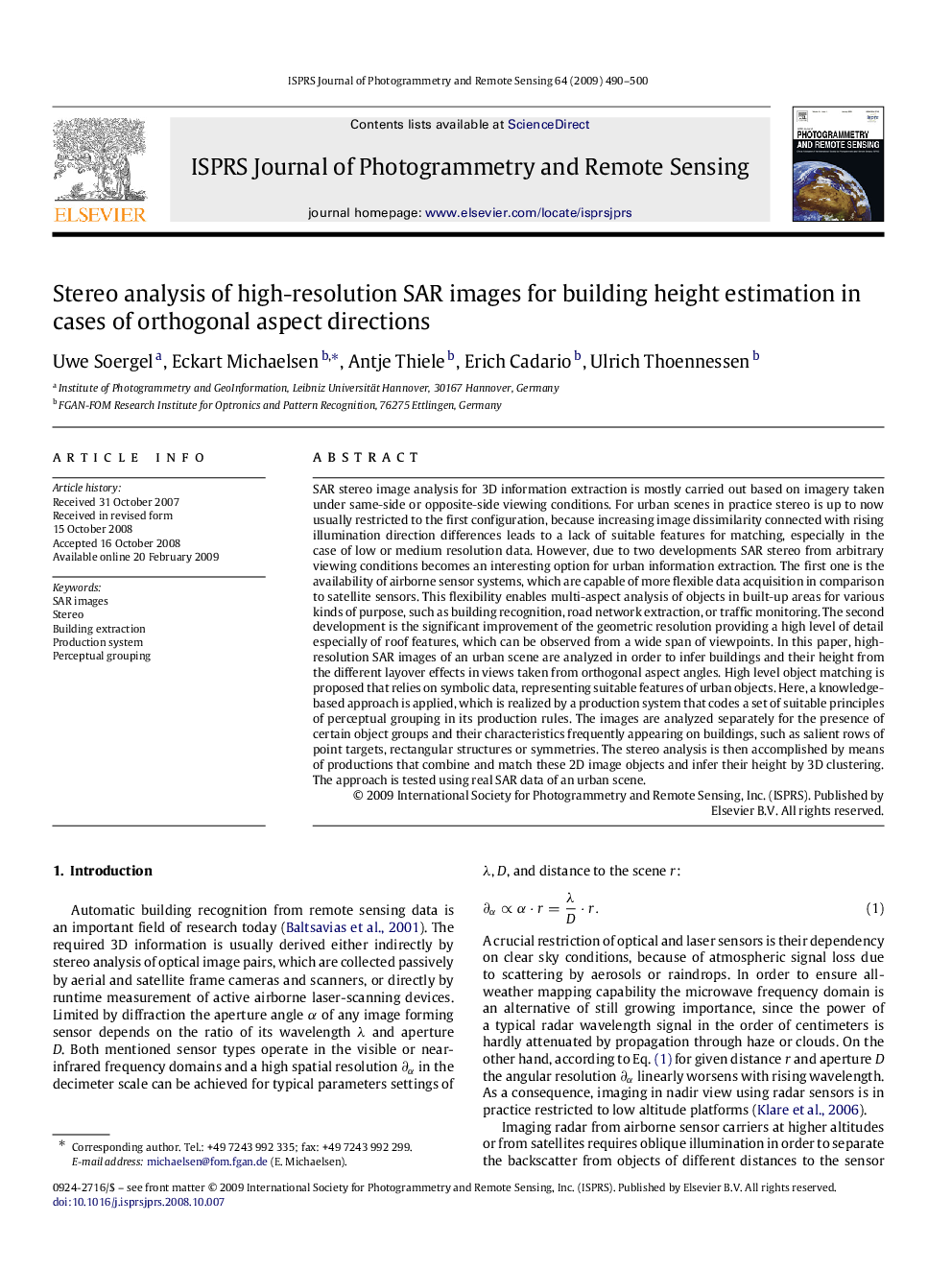| Article ID | Journal | Published Year | Pages | File Type |
|---|---|---|---|---|
| 555933 | ISPRS Journal of Photogrammetry and Remote Sensing | 2009 | 11 Pages |
SAR stereo image analysis for 3D information extraction is mostly carried out based on imagery taken under same-side or opposite-side viewing conditions. For urban scenes in practice stereo is up to now usually restricted to the first configuration, because increasing image dissimilarity connected with rising illumination direction differences leads to a lack of suitable features for matching, especially in the case of low or medium resolution data. However, due to two developments SAR stereo from arbitrary viewing conditions becomes an interesting option for urban information extraction. The first one is the availability of airborne sensor systems, which are capable of more flexible data acquisition in comparison to satellite sensors. This flexibility enables multi-aspect analysis of objects in built-up areas for various kinds of purpose, such as building recognition, road network extraction, or traffic monitoring. The second development is the significant improvement of the geometric resolution providing a high level of detail especially of roof features, which can be observed from a wide span of viewpoints. In this paper, high-resolution SAR images of an urban scene are analyzed in order to infer buildings and their height from the different layover effects in views taken from orthogonal aspect angles. High level object matching is proposed that relies on symbolic data, representing suitable features of urban objects. Here, a knowledge-based approach is applied, which is realized by a production system that codes a set of suitable principles of perceptual grouping in its production rules. The images are analyzed separately for the presence of certain object groups and their characteristics frequently appearing on buildings, such as salient rows of point targets, rectangular structures or symmetries. The stereo analysis is then accomplished by means of productions that combine and match these 2D image objects and infer their height by 3D clustering. The approach is tested using real SAR data of an urban scene.
